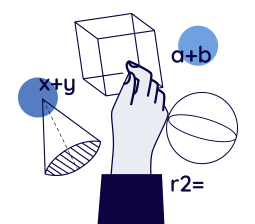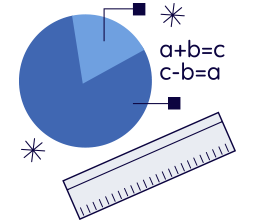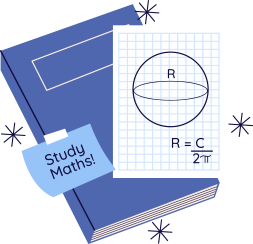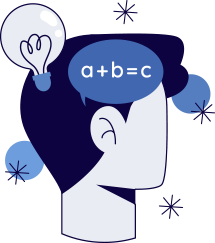Our curriculum aligns closely with MOE’s Assessment Objectives, forming the basis of our teaching method. Customised worksheets target these objectives, promoting student engagement and skill development as outlined by the MOE. This commitment reflects our dedication to providing top-notch education for thorough assessments.
Our centre will adapt to support students in developing mathematical analysis. This entails emphasis on two main aspects: understanding concepts and approaches, and enhancing problem-solving skills.

Systematic reasoning for problem-solving.
Focusing on essential details while ignoring non-essential ones.
A step-by-step set of instructions for solving a problem.
Identify recurring themes or structures in data or problems.
Experimenting and exploring to understand.
Constructing solutions and original ideas.
Identifying and fixing errors or issues.
Working together for shared problem-solving.
Specifically addressing AO3 questions, we will implement the CER framework (Claim, Evidence, Reasoning). This globally recognized framework, commonly used in scientific writing, ensures students structure, and communicate scientific explanations effectively.

A statement that answers the question.
The scientific data and details that support your claim.
Explains "how" or "why" the evidence supports the claim. (aka the scientific rule)
The claim is a concise statement or conclusion that directly answers the question or problem. It is the main point or argument that the writer is making. The claim is often a clear and specific response to an inquiry or investigation.
Evidence is the data, facts, or information that supports the claim. It provides the foundation for the argument and helps demonstrate why the claim is valid. In scientific contexts, evidence is often based on observations, experiments, or research findings.
Reasoning is the logical explanation of how the evidence supports the claim. It involves connecting the dots between the data and the conclusion, demonstrating the scientific principles or logic that justify the claim. This component helps make the argument more convincing and demonstrates a deeper understanding of the subject matter.
Enhance your learning experience with our meticulously designed worksheet, thoughtfully designed to cater to various educational needs. This comprehensive resource encompasses:

Clearly defined objectives to guide and measure your progress.
A student-friendly summary that serves as an effective study aid for school assessments.
Our questions are strategically crafted in accordance with the Ministry of Education's Assessment Objectives for Mathematics (AO1, AO2, and AO3), ensuring alignment with educational standards.
Elevate your understanding with additional practice questions tailored for home learning. Strengthen your skills and reinforce classroom teachings at your own pace.

Our mock examinations mimic real exam conditions, helping students improve time management, reduce anxiety, and build confidence. These simulations allow them to assess performance and identify areas for improvement before finals.
Our curriculum team crafts mock papers in-house, aligning them with MOE standards and ensuring they are slightly more challenging than school exams. This rigorous preparation equips students for their assessments and finals.

Twice a term, we'll dedicate focused time to revisiting key units covered in your lessons. This consolidation period is designed to solidify your understanding and enhance retention.
Engage with 10 to 15 thoughtfully curated questions of varying types. These questions are strategically chosen to challenge and reinforce your grasp of different concepts, ensuring a comprehensive review that goes beyond the basics.

(carry out routine mathematical procedures)
Find the prime factorisation of 1225.
Solution:
1225
= 5 X 245
= 5 X 5 X 49
= 5 X 5 X 7 X 7
= 5² X 7²
Prime factorisation: Algorithm of breaking down a number into its prime factors.
Begin by dividing the original number by smaller prime numbers, such as 2 or 3.
If that doesn’t yield results, move on to larger prime numbers.
(interpret information to identify the relevant mathematics concept, rule or formula to use)
Use the prime factorisation to show that 1225 is a perfect square.
Hence, write down the value of the square root of 1225, that is √1225.
Solution:
The index of the prime factors is even number.
1225
= 5² X 7²
= (5 X 7)(5 X 7)
Thus 1225 is a perfect square.
√1225
= 5 X 7
= 35
Perfect square: The index of the prime factors must be even.
Express the original number as the result of an integer multiplied by itself.
(Justify mathematical statement)
Jason claims that 6125 is a perfect cube. Do you agree? Explain your answer.
Evidence
Solution:
6125
= 5³ X 7²
The index of the prime factor 5 is a multiple of 3 but the index for 7 is not a multiple of 3.
Perfect cube: The index of the prime factors must be a multiple of 3.
Perform prime factorisation on the number to gather evidence before providing an answer.
For perfect cube the index of all the prime factors must be a multiple of 3.
I do not agree with Jason, 6125 is not a perfect cube.